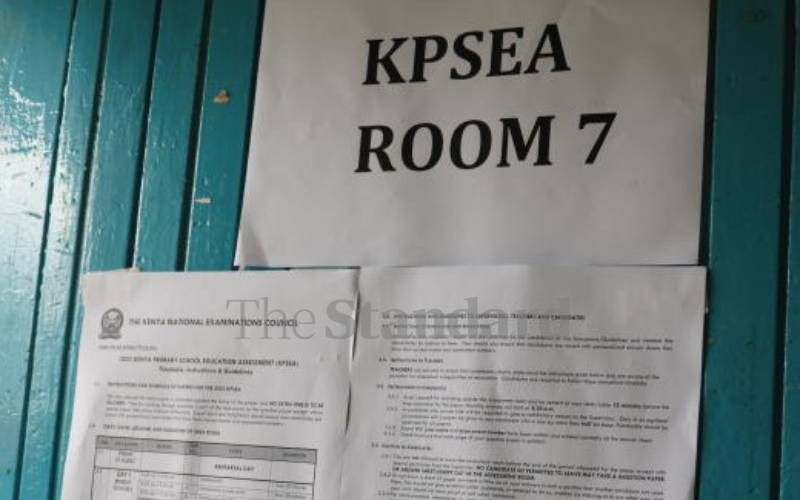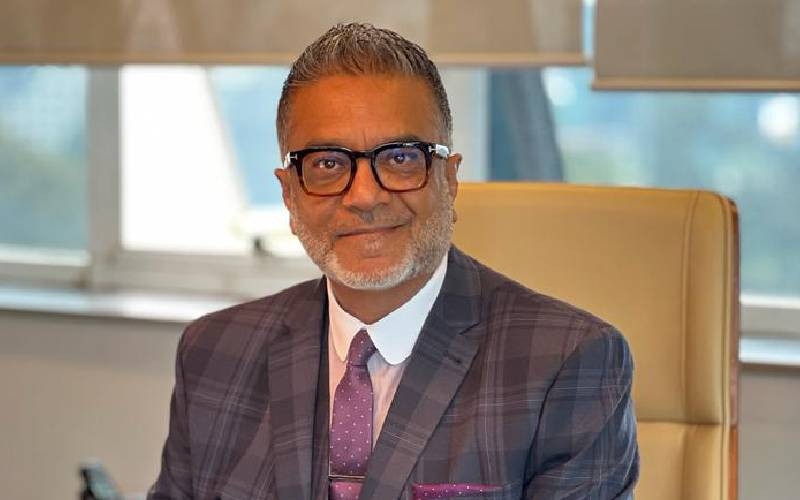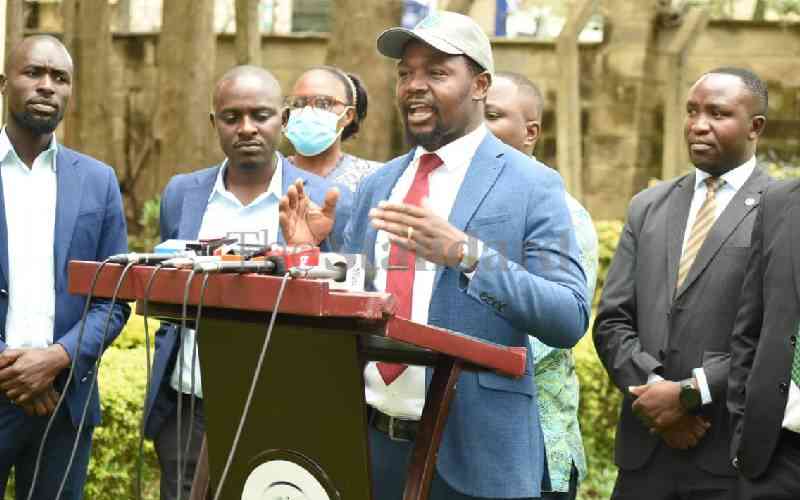 |
|
Newly erected road signs along Salgaa Sachang'wan stretch along Nakuru Eldoret highway that have reduced number of accidents (Photo: Boniface Thuku/Standard) |
Be alert as you travel for holiday, doctor warns about rising cost of treating victims
Over the past two decades, road crashes have impacted directly on public expenditure.
This is according to the report ‘Road Traf?fic Injuries in Kenya: Magnitude, Causes and Status of Intervention. Injury Control and Safety Promotion’.
The cost has increased from 20 years ago when it was estimated that Sh5 to Sh10 billion was spent on road crashes.
It is known to have increased since then.
The aftermath of road accidents, if not death, is mostly marked by fractures and dislocations among other injuries, thus placing the burden of treatment on orthopaedics.
Road crashes account for half of all admissions to surgical wards in Kenya.
In June 2014, the Kenyatta National Hospital (KNH) was reported to be overwhelmed with crash victims, forcing some of them to sleep on floors.
From the perspective of a leading orthopaedic in Kenya, Dr Vincent Mutiso, crashes that end up in the hands of an orthopaedic are as a result of a number of factors – some of which can be avoided.
According to the American Academy of Orthopaedic Surgeons, orthopaedics is the medical specialty that focuses on injuries and diseases of the body’s musculoskeletal system, which includes bones, joints, ligaments, tendons muscles, and nerves.
Mutiso says the burden of accidents does not only lie on the victim or their family, but the country at large because at one point in time, the taxpayer will have to shoulder the burden.
The immediate former chair of the Kenya Orthopaedics Association who also teaches at the University of Nairobi and works at KNH says there are few orthopaedics in the country to take care of people with bone issues.
Apart from road crashes, bone fractures and dislocations also have other causes like domestic violence.
“I believe despite the staff shortage, if we have proper equipment we can do better. Unfortunately the equipment used by orthopaedics is expensive, which further complicates the work of an orthopaedic,” says Mutiso.
He agrees that most health institutions have a challenge in equipping orthopaedic departments.
Stay informed. Subscribe to our newsletter
Shortfalls
With road crashes having been identified by the World Health Organisation (WHO) as being among the top 10 causes of death globally, Mutiso notes there have been concerted efforts by the Government to improve healthcare in the country. However, there are still shortfalls.
Road carnage, he says, is a topic that has been studied extensively and there are models that have been developed on how to tackle issues that arise with accidents.
He says medics have a way of looking at medical problems; they look at the host, agent and environment.
“Road accidents are not isolated issues but a series of interconnected events that range from road design, state of vehicles to human error; each of these needs to be looked into in trying to understand accidents,” says Mutiso.
Breakages
But Mutiso says orthopaedics understand better the plight of the people who have been involved in crashes and come out with breakages.
Looking at the bigger picture, Mutiso says once there is an accident, the person stops being economically viable.
The accident also disrupts or stops the lives of other family members.
“When a crash occurs, a whole family is grounded and it is like time stops. But remember the world does not stop because an accident occurred.
“Therefore, the family has to find a way to cope,” says Mutiso.
He notes that majority of those injured in accidents are in the productive age (25 to 45 years) and this has a direct effect on the economy.
Coming to hospital, if the case is intensive care unit, then that means one nurse will have to be tied down to that one patient while had the accident not been there, the nurse would have attended to other patients.
Treating an accident victim in a public hospital may seem cheaper than in a private facility, but the truth is that the amount of money being used in public hospitals equals that in the private facility, only that the taxpayer subsidises the cost, says Mutiso.
There are costs associated with treatment of injuries like the need for dialysis, MRI scan and X-ray, among other services.
“An MRI scan in a private hospital costs about Sh23,000 per scan, per body region. Without this it would be difficult to understand the depth of injuries; a surgery might take between four to six hours,” Mutiso says.
In some cases there is a need to replace a hip or use metal plates to strengthen broken bones. Replacing a hip for an old person costs about Sh80,000 while it gets expensive for a young person at about Sh270,000.
Value added tax is charged while at the same time the hospital might require a mark-up of between 20 and 40 per cent.
Mutiso says with the increase in the number of vehicles, the number of accidents might rise, but if the facilities – which have been scanty anyway – remain the same, then the situation can only grow worse.
The need for psychologists in therapy after the crash is key because this can trigger psychological changes because accidents affect the normal function of part or all of the body.
“Thus, an accident is an expense that cuts across, not just one person, but a whole group of people; but prevention is always better than cure,” concludes Mutiso.
 The Standard Group Plc is a
multi-media organization with investments in media platforms spanning newspaper
print operations, television, radio broadcasting, digital and online services. The
Standard Group is recognized as a leading multi-media house in Kenya with a key
influence in matters of national and international interest.
The Standard Group Plc is a
multi-media organization with investments in media platforms spanning newspaper
print operations, television, radio broadcasting, digital and online services. The
Standard Group is recognized as a leading multi-media house in Kenya with a key
influence in matters of national and international interest.
 The Standard Group Plc is a
multi-media organization with investments in media platforms spanning newspaper
print operations, television, radio broadcasting, digital and online services. The
Standard Group is recognized as a leading multi-media house in Kenya with a key
influence in matters of national and international interest.
The Standard Group Plc is a
multi-media organization with investments in media platforms spanning newspaper
print operations, television, radio broadcasting, digital and online services. The
Standard Group is recognized as a leading multi-media house in Kenya with a key
influence in matters of national and international interest.









